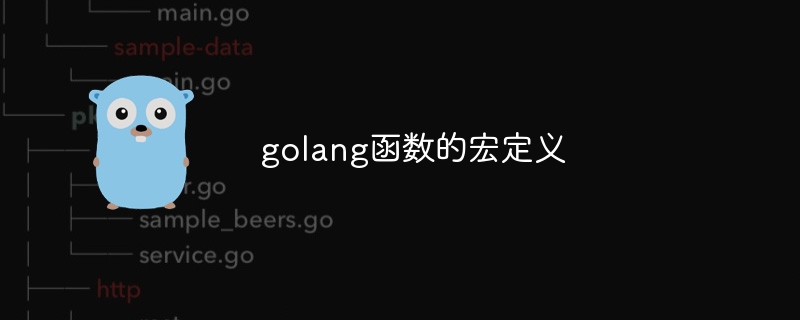
The function macro definition in the Go language allows function pointers to be stored in constants to bind function calls in advance and enhance code readability and maintainability. The specific steps are as follows: Use the const keyword to define a macro, specify the macro name, parameter list and return value type. Write the function body in a function macro. Call a function macro by its name. Function macros can be used in various scenarios, such as file content comparison.

Function macro definition in Go language
Introduction
In Go language , you can define function macros through the keyword const, which is a technique for storing function pointers in constants. Function macros provide the convenience of binding function calls in advance, improving the readability and maintainability of code.
Syntax
const 函数名 = func(参数列表) 返回值类型 { ... }Among them:
Function name: The name of the macroParameter list: Parameter list of the functionReturn value type: Return value type of the function...:Function Function bodyInstance
Define function macro
const printName = func(name string) {
fmt.Println("Hello,", name)
}Call function macro
// 使用函数宏
printName("John Doe")Output
Hello, John Doe
Practical case
The following is a case of using function macros to compare file contents in the file system :
// 宏定义
const compareFileContents = func(file1, file2 string) bool {
data1, err := ioutil.ReadFile(file1)
if err != nil {
return false
}
data2, err := ioutil.ReadFile(file2)
if err != nil {
return false
}
return bytes.Equal(data1, data2)
}
// 主函数
func main() {
// 使用宏比较两个文件的内容
result := compareFileContents("file1.txt", "file2.txt")
if result {
fmt.Println("文件内容相同")
} else {
fmt.Println("文件内容不同")
}
}Conclusion
Function macro is a useful feature in Go language. It provides a concise way to store function pointers, thereby realizing early binding. Certain function calls. This is very beneficial for improving the readability and maintainability of your code.
The above is the detailed content of Macro definition of golang function. For more information, please follow other related articles on the PHP Chinese website!
 Usage of Type keyword in Go
Usage of Type keyword in Go
 How to implement linked list in go
How to implement linked list in go
 What are the Go language programming software?
What are the Go language programming software?
 How to learn go language from 0 basics
How to learn go language from 0 basics
 How to define variables in golang
How to define variables in golang
 What are the methods to implement operator overloading in Go language?
What are the methods to implement operator overloading in Go language?
 What are the operators in Go language?
What are the operators in Go language?
 What are the data conversion methods in golang?
What are the data conversion methods in golang?




